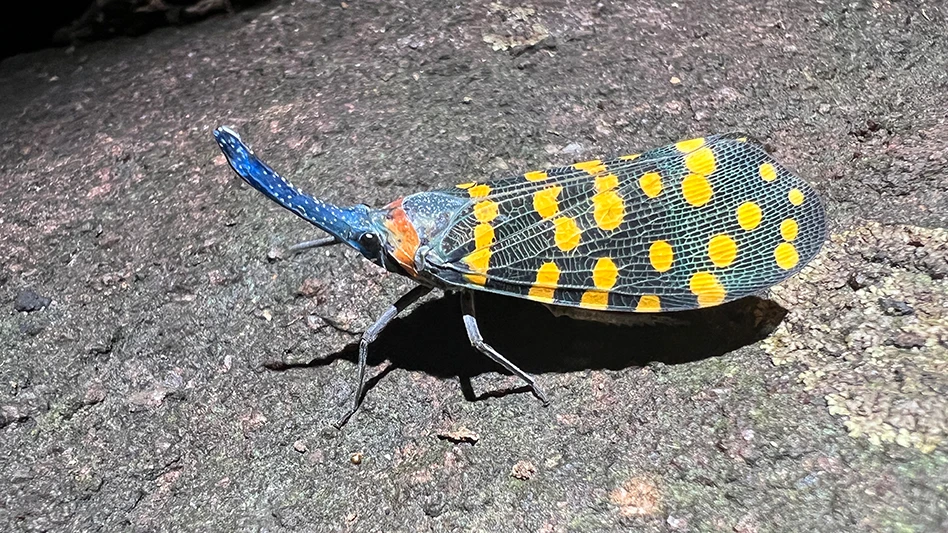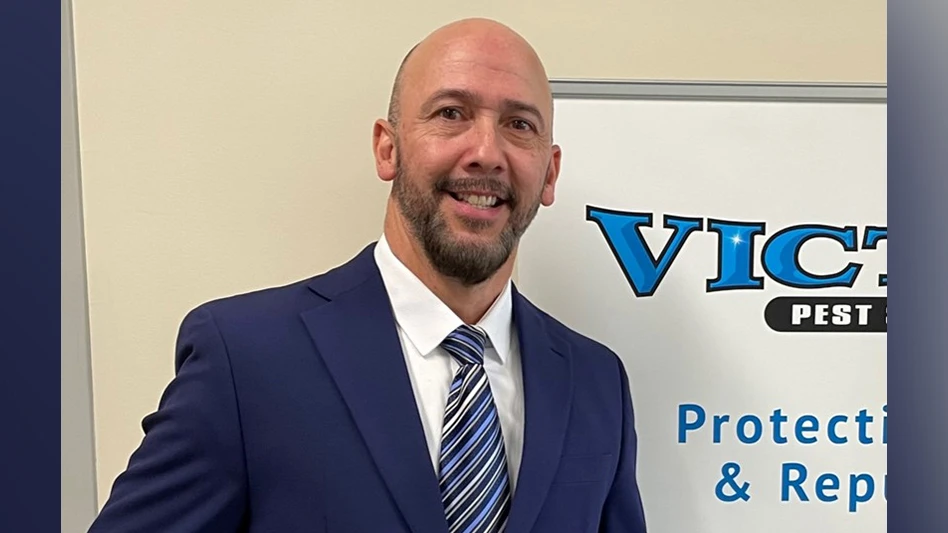 Perhaps more than pest management professionals realize, the practice of pest control and public health are intricately related. For example, PMPs perform “practical public health entomology” every day, providing society a valuable health function by preventing and controlling arthropod and vertebrate pests that carry diseases.
Perhaps more than pest management professionals realize, the practice of pest control and public health are intricately related. For example, PMPs perform “practical public health entomology” every day, providing society a valuable health function by preventing and controlling arthropod and vertebrate pests that carry diseases.
Despite what you hear from the anti-pesticide segments of society and activist groups, pest control efforts are recognized as important (even indispensable in tropical countries) by governments worldwide and the World Health Organization. There is a pesticide-friendly position statement on the U.S. Centers for Disease Control and Prevention (CDC) website about the importance of mosquito spraying as part of an overall program. The CDC realizes the importance of pesticides in mosquito control and supports their use as part of an overall mosquito control program (http://1.usa.gov/W5vpAY). To get some perspective, I think it’s important occasionally to revisit where we are today and how we got here. The following article explores the origins of pest control and public health.
A long history. Long before anyone understood the “germ theory” or causes of medical conditions, it was recognized that insects might produce diseases. The ancient Babylonians worshipped a god of pestilence, which was represented as a two-winged fly, so they must have somehow related flies with disease. About 2500 B.C., a Sumerian doctor inscribed on a clay tablet a prescription for sulfur in the treatment of itch, a substance we now know kills itch and chigger mites.
Other recorded instances of arthropod-borne diseases and infestations can be found in the Bible’s Old Testament, beginning with accounts of plagues on the Egyptians. For example, the third plague, called “lice” in the King James version of the Bible (in later translations, more accurately termed “gnats”), was likely Culicoides midges that transmitted the causative agents of African horse sickness and bluetongue to Egyptian livestock (which was, by the way, the fifth plague, so the third plague contributed to the fifth). The sixth plague consisted of boils and ulcers on humans and animals, which could have been the disease called Glanders, which is transmitted by biting flies. More recent evidence of medical and public health issues has been found as well, some specifically addressing arthropods.
The enormous library of Ashurbanipal (668-626 B.C.), a great king and scholar, included much of the early Mesopotamian literature about diseases and pharmacological treatments. These early writings detailed use of effective drugs, including the fruit, leaf, flower, bark and roots of various plants such as the lotus, olive, myrtle and garlic. First-century B.C. hair combs containing remains of lice and their eggs have been unearthed in the Middle East. Peruvian pottery has been found dating from about 600 A.D. that shows natives examining their feet — and their feet display what appear to be holes where chigoe fleas (burrowing fleas) had been removed. Other pottery found near the Mimbres River in New Mexico, dated to 1200 A.D., clearly depicts a swarm of mosquitoes poised for attack.
In the very beginnings of written history, health and hygiene issues were assigned to priests and other religious leaders. Almost 5,000 years ago, there was a position in Egyptian government called the vizier, a priestly minister of state, who had the duty of inspecting the water supply every 10 days. The priesthood of the biblical Hebrews was similar, but much more sophisticated and elaborate. Although its origin may have been based in part on Egyptian and Mesopotamian medical knowledge, the Mosaic Code developed by the Jewish people is the basis of modern sanitation and pest control today.
This code was the best human-devised means of achieving and maintaining health for nearly 3,000 years, and included insights such as establishing quarantines, washing hands with running water, limiting contact with the dead and eating meat only from healthy animals slaughtered under close scrutiny of concerned rabbis. Again, responsibility for carrying out the regulations of the Mosaic Code rested with the priesthood. Later, in Classical Greece, science, medicine, philosophy and the arts flourished for almost 500 years. Asclepius was the patron saint of Greek medicine and his daughter, Hygeia, was considered the saint of preventive medicine (some health departments still use the image of Hygeia as their logo).
During the Roman Empire, Galen’s medical writings became the authoritative source for all Arabic and late-medieval medicine. The Romans made great strides in sanitation, civil engineering and hygiene, with construction of numerous aqueducts and sewage systems. They also were among the first to develop baths and indoor sanitation measures. The Roman professional position of aediles (about 500 B.C.) was essentially a non-physician administrator of sanitation, and included the responsibility to care for the safety and well-being of the City of Rome, specifically, repair and upkeep of public buildings, aqueducts and sewers, fire prevention and street improvements.
 After the Roman Empire, and during the ensuing Dark Ages, science basically disappeared from Europe, and along with it, much of sanitation and health-related arts. There is some evidence that monks and other church leaders rarely bathed, considered cleanliness as an abhorrence, and were vermin-ridden. Plague, leprosy, smallpox and tuberculosis emerged among the population, decimating Europe from about 800 A.D. to 1400 A.D. However, there were remnants of public health and sanitation administration.
After the Roman Empire, and during the ensuing Dark Ages, science basically disappeared from Europe, and along with it, much of sanitation and health-related arts. There is some evidence that monks and other church leaders rarely bathed, considered cleanliness as an abhorrence, and were vermin-ridden. Plague, leprosy, smallpox and tuberculosis emerged among the population, decimating Europe from about 800 A.D. to 1400 A.D. However, there were remnants of public health and sanitation administration.
For example, in England in 1297, there were legal requirements for every man to keep the front of his tenement clean, and in 1357, a royal order was issued by King Edward III requiring the mayor of London and the sheriffs to prevent pollution of the Thames River. King John of France in 1350 established “sanitary police” as a governmental entity. Ever so gradually, cleanliness and hygiene returned as important factors in society. In 1491, Johann Pruss promoted regular bathing and changes of clothing as a lice deterrent, and Ignatius Loyola, the famous Catholic priest, established rules of exercise, nutrition and cleanliness for his followers.
In the late 1500s, Queen Elizabeth I instituted housing regulations proposed to relieve overcrowding, pure food laws to prevent adulteration of foodstuffs, and regulations for the control of epidemics. During this time, pests increasingly became recognized as being related to filth, waste and harborage. Thomas Tryon in 1682 reported that vermin are encouraged by filth and can be avoided by washing and exposure to fresh air. The Renaissance opened the door for even more improvements in sanitation and hygiene in the human population, which have continued to this day.
Origins of pest management. Organized, purposeful pest control probably had its origins during the early Middle Ages (500-1100 A.D.) as a result of people trying to get rid of rats. A few chemicals or plant extracts were known to kill rats during that time, but people tried all sorts of other methods as well.
There are historical records of people using the names of saints and various religious incantations to try to drive rats out of cities and towns across Europe. Also, there are reports of people “rhyming” them to death or using bagpipes to drive them away. Sometime between the 11th and 14th centuries, the position of “apothecary” arose, and these people specialized in all sorts of medicines and poisons. There is a section in Chaucer’s Pardner’s Tale (1387 A.D.) detailing the purchase of something from an apothecary for “rattons quell,” meaning “rats kill.”
Modern day barbers are also ancestors of pest control personnel. The profession of barber-surgeon was originally a branch of medicine and they were often assigned to armies during wars to perform battle surgeries. Even today, the red and white barber pole represents the blood and bandages originally associated with barber-surgeons. Eventually, during the 14th century, an official Guild of Barber-Surgeons was formed which, through time, enacted increasingly stricter educational and professional standards, eventually leading surgery to a more respectable profession. The barbers were thus left behind to shave men, cut or dye hair, and dispense nostrums and ratsbane, among other activities. During the Middle Ages, the ratsbane seller was a street and market vendor who sold a variety of chemicals and rodent traps. A little later, this developed into a profession called the “rat catcher.” Rat catchers were colorful figures often dressed in fancy clothing who appeared at county fairs and marketplaces performing juggling acts, story-telling and magic tricks. Perhaps the most famous rat catcher story is Robert Browning’s 1842 version of the much older Pied Piper of Hamelin story, in which the rat catcher agrees — for a fee — to drive a plague of rats into the Weser River. When he doesn’t get paid, he entices the children of the town away by the sounds of his pipe.
By the early 18th century, rat catchers of Europe had become highly specialized and used a variety of pest control methods such as traps, chemicals and terrier dogs trained to find and kill rats. The first official pest control company was H. Tiffin and Son Ltd. in London, which had its beginnings in 1690 (some say 1695), promoting rat and bed bug control using methods and chemical compounds they invented. Tiffin and Son had the trademark, “Bug Destroyers to Her Majesty and the Royal Family.” More than a century later (about 1850), a famous rat catcher, Jack Black, was called the “Rat and Mole Destroyer to Her Majesty Queen of the United Kingdom.” Vermin exterminators from England and Germany eventually emigrated to the United States from about 1840 to 1930, carrying with them their knowledge of pests and pesticides. These early European exterminators founded the American urban and structural pest control industry.
Insecticide use. As for pesticides developed for use in pest control, for thousands of years humans occasionally used chemical compounds to try to ward off pests, such as sulfur for itch mites (we now know that sulfur is an effective acaricide relatively safe for human use). Also, red squill was used as a rat poison in the first millennium B.C., and arsenic was used for rodent control by 1250 A.D. However, during the 1800s copper sulfate, nicotine, fluorides, pyrethrum powder and other arsenicals came into widespread use as insecticides.
For example, sodium silicoflouride was used to control ectoparasites on livestock and crawling insects in houses and buildings. These inorganic compounds, while not miracle drugs, certainly were better than nothing, but required large dosages to kill pests. In the 1930s, scientists found that the synthetic compound paradichlorobenzene, used for clothes moth control, was effective against peachtree borers. Then scientists discovered that substituted phenolic compounds had insecticidal properties. Thus began the systematic search for related synthetic compounds. DDT, one of the most famous of all pesticides, was first synthesized in 1874, but its insecticidal properties were not discovered until 1939. DDT was used with great success in the second half of World War II to control malaria and typhus among civilians and troops, being sprayed directly on people and property. Other chlorinated hydrocarbons soon were developed such as lindane, endrin, aldrin, chlordane and many others. These compounds had long residual effects, killing insects 10 to 30 years after application.
Pesticide development and use has gone through several phases. As mentioned, the “first-generation” pesticides consisted of such things as kerosene, sulfur, arsenate of lead and nicotine sulfate. These were often applied by Flit guns (named after an insecticide used for fly control) or other primitive dusting or application equipment. During and immediately after World War II, far more potent “second- generation” pesticides were developed, including the chlorinated hydrocarbons such DDT, and later in the 1950s-60s, several new carbamates and organophosphates were added to the repertoire of insecticide chemistries.
These were used extensively until the early 1970s when environmental and ecological concerns were raised by Rachel Carson in her famous book, “Silent Spring.” That is when many of the chlorinated hydrocarbons were removed from the market. These environmental concerns also led to the eventual restriction of many of the carbamates and organophosphates, leading the way for research and development of “third-generation” products such as pheromones, insect hormones, host attractants and other biocontrol agents. More recently, the green movement has spurred the use of even more “safe” repellents and pesticides, such as those composed of food-grade essential oils. As for traditional, residual pesticides, they are certainly still in existence (mostly pyrethroids and several newer classes of chemistry), but used sparingly or in conjunction with other non-chemical control methods, a familiar term called “Integrated Pest Management.”
Final thoughts. The pest control industry has come a long way from the time of the rat catcher. Today, pest control is firmly guided by science instead of art, magic or cultural practices. Making things worse (or better, depending upon your perspective), the regulatory environment of modern times requires the least use of the least-toxic pesticides, and appropriate and proper justification for all chemical uses. Further, modern PMPs are rapidly becoming educators or consultants, instead of merely pesticide applicators. It’s exciting to think about what new changes are in store and where our industry is headed in the future!
Goddard is the author of “The Physician’s Guide to Arthropods of Medical Importance.” E-mail him at jgoddard@giemedia.com.

Explore the December 2012 Issue
Check out more from this issue and find your next story to read.
Latest from Pest Control Technology
- PestCo Holdings Acquires Bio-Tech Pest Control
- Mosquito Authority Announces Franchisee of the Year, Rookie of the Year
- Peitho Helps PCOs Get Seen on AI Search
- Massey Services Promotes Mumme to Divisional VP of Commercial Services
- Thomas Pest Services Opens New Office, Celebrates 15 Years in Business
- Bruno Milanese Reflects on Experiences During Hurricane Katrina
- Envu's Horizon Rewards Program
- Anchor Pest Control's Lewis Antonoff Surpasses $1 Million in Annual Sales for 2025





